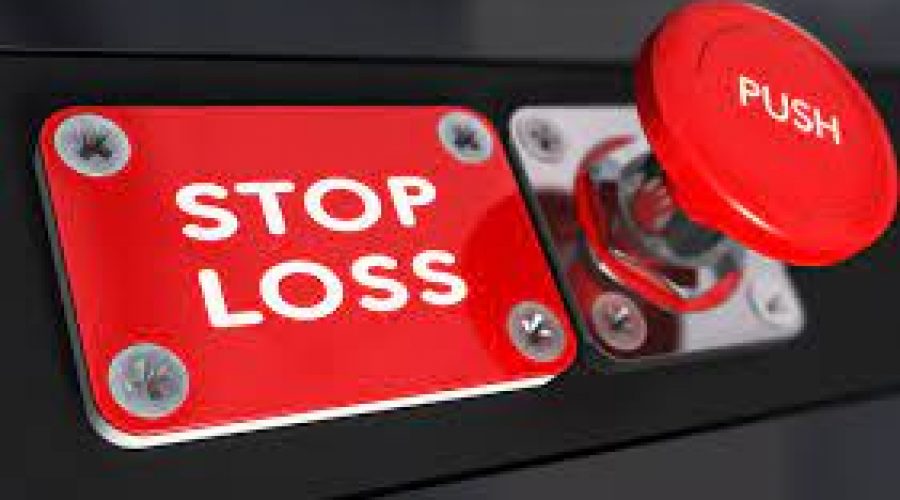A Stop-loss order is an order type used by stock-traders and is often promoted as s way to protect wealth. This order is typically set about 8–12% below the current market price and will trigger a stock sale if the position trades at or below the stated price. As stocks rise the order is ratcheted up maintains the same targeted percentage below the current price of the stock.
On the surface this strategy would seem to protect the portfolio from a large drop in market prices. In reality for most long-term investors a stop-loss strategy results in lower returns than a prudently diversified portfolio that is rebalanced as prices fluctuate. A stop-loss strategy is less efficient mostly because markets are volatile and prices rise 2-3x as much as they fall. Many investors fear market losses and believe being in the market when it declines is risky, but I would argue it is much much riskier to miss out on the inevitable market gains that occur when markets rise.
I’m actually not a big believer in using stop-losses on long-term wealth accumulation money (especially in taxable accounts) because of tax penalty caused by paying capital gains tax and other frictional cost like bid/ask spreads which can ruin the long-term impact of compounding).
Warren Buffet doesn’t understand why investors use stop-loss orders. Buffet joked, “It has always struck me as like having a house that you like, and you’re living in, and, you know, it’s worth $100,000 and you tell your broker, ‘You know, if anybody ever comes along and offers $90,000, I want to sell it.”
If you are worried and want to reduce the risk that can come from owning stocks, wouldn’t it be better to sell it at today’s price of $100/share in our example above vs waiting and accepting $90/share only if the price falls.
Large market losses which are what most investors worry about occur infrequently (around 1x per decade), but small to medium losses big enough to trigger a 10% stop-loss can occur several times per year. Market volatility can whipsaw investors. When a stock or investment falls a standing stop-loss order will trigger a stock sale. Many times before the position can be added back the stock may bounce and return to or exceed its prior price. When investors sell a core investment position they want to own, they must be right twice, “when to get out”and “when to get back in.” A stock market Legend is right about 60% of the time. Any strategy that causes more trading increases cost and makes it more likely an investor will eventually make a mistake. Frequent trading is more “like handling a bar of soap, the more you touch it, the smaller it gets.”
Another disadvantage of a placing a stop-loss order is the potential for a position to gap open down on negative news. When a stop-loss order is triggered because of a falling stock, the trade becomes a market order and it will trade at the next price. Many times when something cause the stock to fall, it gap opens down well below the price of the stop-loss order’s stated price. This can cause a 10% stop-loss to execute at minus 20% or whatever price the next trade occurs at. This can cause an unexpected outcome that can be hard to recoup.
When might I use a stop-loss order? Generally i would rather just sell the stock, but if I was going to use this type of order, it might be more effective in a tax-deferred account or a stock trading accounts where there is no tax impact on sales as stop-loss orders will trigger more trades than a buy and hold strategy. Generally because ETFs and Mutual funds are diversified and less volatile than individual stocks, I would rather use defensive assets that are less correlated like high quality bonds to protect offensive assets like equity funds. Bonds will often zig when equities zag (except for 2022).
I think risk tolerance changes as life happens. Timing markets is very difficult and often unproductive, but if something happens that may cause you to question your investment mix (like you know you have a need for a planned expense within 5 years and therefore may need to tap some of the money that is in equities or stocks. At our firm we teach clients the “5-year rule” – No money should be invested in equities that is needed within 5 years, because you may not have enough time for equities to produce positive returns. In this scenario, it may be wise to lower your risk and sell some of the equities in your portfolio down to a risk level that would help you sleep better at night and stay within the 5-year rule. Executing this trade while prices are higher before they fall should result in more wealth.
Should you have any additional questions on stop-loss order, other investment strategies, or any questions surrounding investment management please don’t hesitate to give us a call or submit a question via email.
